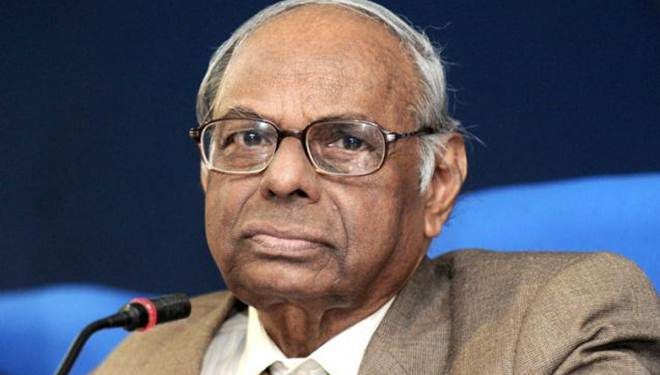New Delhi: A small positive economic growth in 2020-21 may not be ruled out as sectors like agriculture and essential goods and services were fully operational in the first quarter despite coronavirus-induced lockdown, according to a paper co-authored by former RBI governor C Rangarajan.
Rangarajan and India EY India chief policy advisor D K Srivastava in a paper titled ‘India’s Growth Prospects and Policy Options: Emerging from the Pandemic’s Shadow’ stated that the story of the Indian economy as it unfolds under the impact of COVID-19 is disquieting.
The paper noted that although many national and international agencies have projected a sharp contraction in the GDP in 2020-21, ranging from World Bank’s projection of 3.2 per cent to SBI’s 6.8 per cent, there are reasons to believe that the outcome may be better than these strong contractionary prospects.
“We may note that some key sectors like agriculture and related sectors, public administration, defence services and other services may perform normally or better than normal given the demand for health services,” the paper said.
Further, the paper pointed out that goods and services categorised as essential goods and services in other sectors, technically called ‘permitted goods and services’ together with agriculture and public administration, defence and other services, may have a weight in the range of 40-50 per cent of total output.
“These were fully operational even in the first quarter of 2020-21. Thus, nearly half of the economy may perform normally or better than normal over the full 2020-21,” it said.
The government imposed nation-wide lockdown from March 25 to contain the spread of coronavirus and it continued in various phases in June, albeit with a significant easing of restrictions since early May.
Also, given the current geopolitical situation, the government at the central and state levels have become more active in attracting investment from abroad, the paper said adding that the reforms in the corporate tax rates in 2019-20 will also facilitate the relocation of various production platforms to India.
“Thus, a small positive growth may not be ruled out,” the paper said.
India’s economy has suffered its worst slump on record in April-June quarter of 2020-21, with the gross domestic product (GDP) contracting by 23.9 per cent as the coronavirus-related lockdowns weighed on the already-declining consumer demand and investment.
This is the sharpest contraction since quarterly figures started being published in 1996 and worse than what was expected by most analysts.
The Indian economy was in a troubled state when the pandemic hit the world. Before COVID-19 crisis hit India, the economy was already decelerating, real GDP growth had moderated from 7.0 per cent in 2017-18 to 6.1 per cent in 2018-19 and 4.2 per cent in 2019-20.
Noting that the lockdown has put a brake on the economy, the paper suggested that the need to kick start the economy and move it forward has become urgent.
“Maintenance of government expenditure at a high level is unavoidable and monetisation of debt is also unavoidable.
“But policymakers must also be conscious of the fact that there is a limit to monetisation.Wisdom lies in striking the appropriate balance,” it said.
Monetisation of deficit happens when the RBI directly buys government securities from the primary market and in turn prints more money thereby helping it to bridge the fiscal deficit.
The paper said that even as India takes steps to kick start the economy, the country must consider the shape of the next round of reforms which would pave the way for sustained growth in post-COVID era.
“Recapitalization of banks and regulation of bad debt must get priority. The reform measures announced recently by the government such as private operations in coal mining are truly in the spirit of liberalisation.
“They need to be implemented with dedication and commitment,” it said.
(PTI)






































